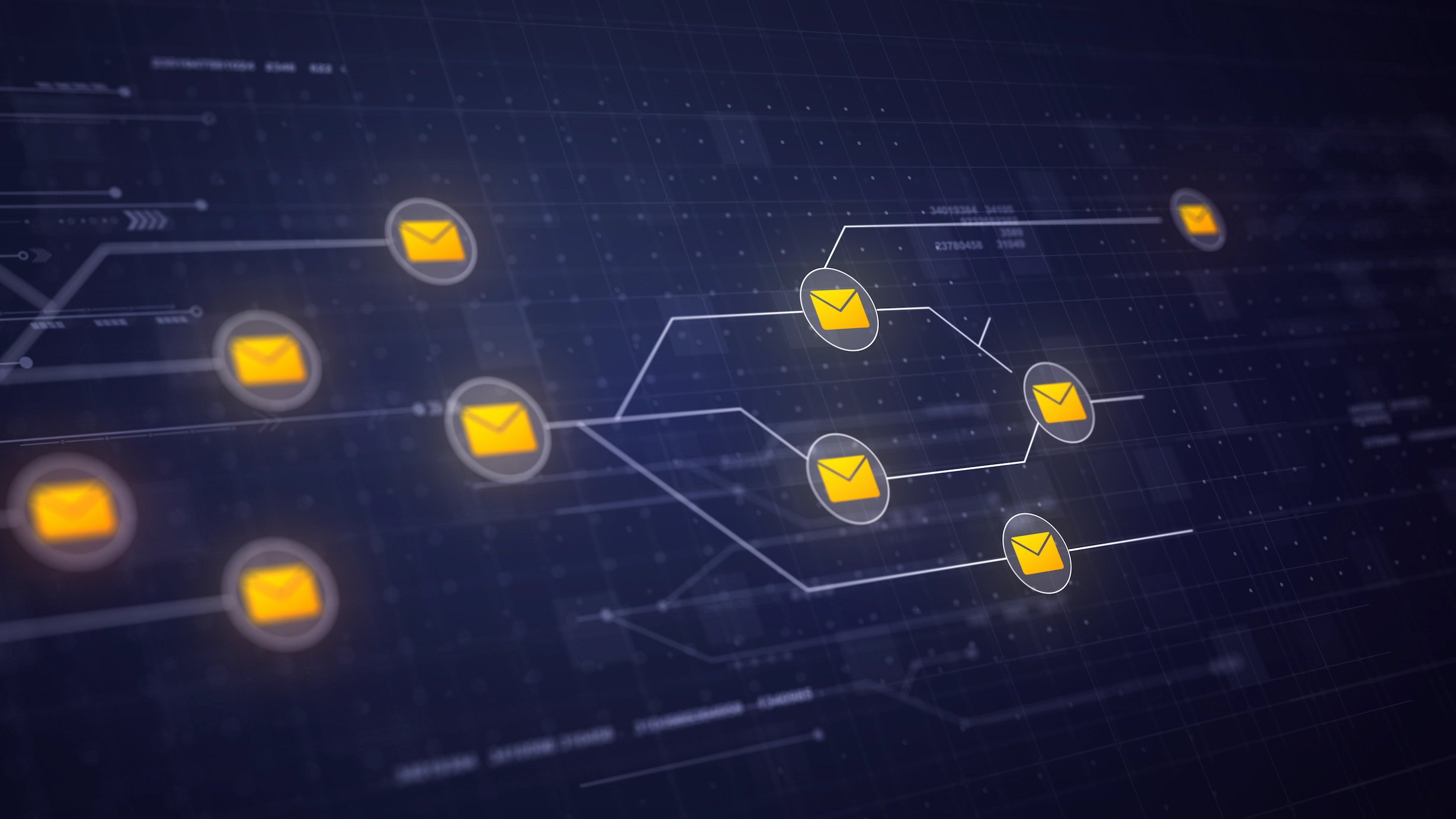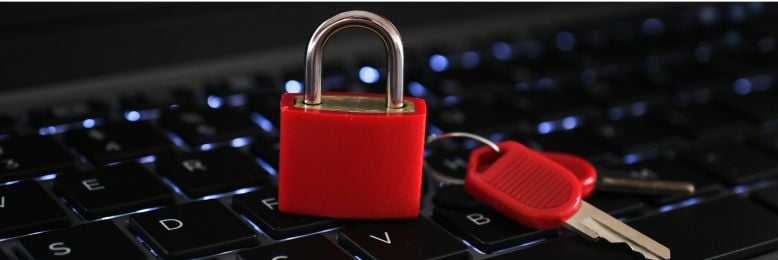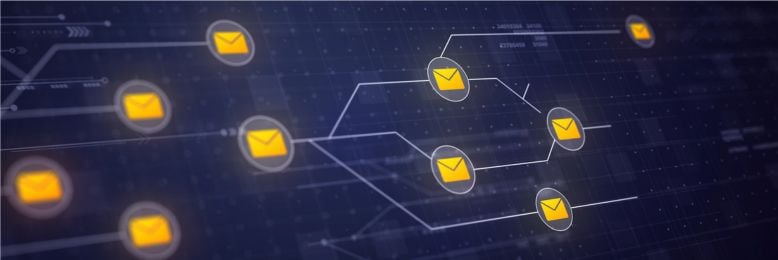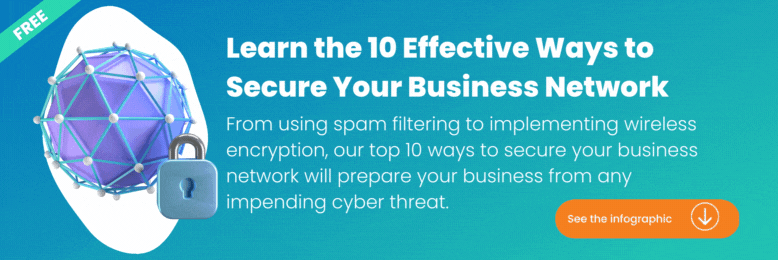What is DMARC, and Why is it Important for Email Security?
March 26th, 2024 | 4 min. read

Here's a scary fact: more than 90% of cyber-attacks start with an email message. And, with techniques like email spoofing, these attacks have become harder to identify.
Spoofing is the process where attackers impersonate a sender's identity to deceive recipients into believing that the email is from a trusted source. Imagine getting an email from your bank, partner, or parent company asking for sensitive information. Their email address looks legitimate. The problem is that it's a spoofed email, and the sender isn't someone you know. It's a hacker trying to steal your information.

Your team might not fall victim to it the first time. However, the scary part is that over 3.1 billion domain spoofing emails are sent daily. It only takes one person to accidentally click a link or provide sensitive information, and you have a security incident.
That's where Domain-based Message Authentication, Reporting & Conformance (DMARC) comes in handy. Email clients configured to use DMARC will automatically reject emails that fail validation or send them to the user's spam box. That will significantly improve your chances against spoofing attacks.
Intelligent Technical Solutions is a cybersecurity service provider that has helped hundreds of businesses secure their emails. In this article, we’ll dive deeper into DMARC by going into the following:
What is DMARC?
DMARC stands for Domain-based Message Authentication, Reporting, and Conformance. It's an email authentication protocol that helps prevent email spoofing and phishing attacks by verifying that incoming emails are from legitimate senders.
DMARC enables businesses to specify policies for handling emails that fail authentication, such as quarantine or reject them. This protocol is essential for businesses' email security because it helps protect against impersonation attacks. In addition, it strengthens the organization's overall cybersecurity posture by reducing the risk of data breaches associated with phishing scams.

How Does DMARC Work?
DMARC works by allowing domain owners to set policies for email authentication and specify how receivers should handle messages that fail authentication checks. Here's how it works:
1. Authentication Protocols
DMARC relies on two primary authentication protocols: SPF (Sender Policy Framework) and DKIM (DomainKeys Identified Mail). SPF verifies the sender's IP address against a list of authorized sending servers, while DKIM uses cryptographic signatures to verify the authenticity of the email's contents.
Here's how they work, explained using a party analogy:
- SPF is like the guest list for your party. It specifies which email servers are allowed to send messages on your behalf. If an email comes from a server that isn’t on the list, it's likely an imposter.
- DKIM is the sealed invitation. It uses encryption to ensure that the message hasn’t been tampered with. If the seal doesn’t match, the invitation is deemed invalid.
- DMARC is the bouncer at the door. It enforces the rules by ensuring that only guests with both a valid invitation (SPF) and a matching seal (DKIM) are allowed into the party. If something is amiss, the bouncer rejects or quarantines the guest.
2. DNS Records
The domain owner publishes DMARC policies in DNS records, specifying which authentication methods to use and what actions receivers should take if an email fails authentication. These policies include options to monitor, quarantine, or reject suspicious emails.
3. Email Transmission
When an email is sent, the receiving email server checks the sender's domain for DMARC policies. If a policy is found, the server follows the specified instructions to authenticate the email using SPF and DKIM.
4. Policy Enforcement
Based on the DMARC policy, the receiving server takes appropriate action if the email fails authentication. This could include delivering the email as normal, routing it to the recipient's spam folder (quarantine), or rejecting it outright.
5. Reporting
DMARC also provides reporting mechanisms that allow domain owners to receive feedback on email authentication results. These reports contain detailed information about authentication failures, allowing organizations to identify and address issues effectively.
7 Steps to Set Up DMARC for Your Email
Setting up DMARC for your emails involves several steps:
Step 1: Assess Your Current Email Infrastructure
Before implementing DMARC, evaluate your organization's current email setup, including the domains used for sending emails and the email authentication protocols (SPF and DKIM) already in place.
Step 2: Publish SPF and DKIM Records
Ensure that Sender Policy Framework (SPF) and DomainKeys Identified Mail (DKIM) records are correctly configured for your domains. These records help authenticate your email messages and are prerequisites for DMARC implementation.
Step 3: Create a DMARC Record
Generate a DMARC record for your domain and publish it in your DNS (Domain Name System) records. The DMARC record specifies your organization's DMARC policy, including the desired actions for handling emails that fail authentication (such as none, quarantine, or reject) and the email addresses for receiving DMARC reports.
Step 4: Monitor DMARC Reports
Once DMARC is implemented, monitor the DMARC reports regularly to assess email authentication status, identify any authentication failures or anomalies, and adjust your DMARC policy as needed.
Step 5: Gradually Enforce the DMARC Policy
Start with a DMARC policy of "none" (monitoring mode) to collect data on email authentication status. Gradually increase enforcement by setting the policy to "quarantine" or "reject" once you are confident in your email authentication setup.
Step 6: Analyze and Fine-Tune
Continuously analyze DMARC reports, review authentication failures, and refine your SPF and DKIM configurations to improve email deliverability and security.
Step 7: Seek Professional Assistance
If you encounter challenges during the DMARC setup process or require assistance configuring SPF, DKIM, or DMARC records, consider consulting with IT professionals with experience in email authentication and DMARC implementation.

Need Help Implementing DMARC for Your Email?
As we mentioned before, DMARC is crucial for protecting your email from spoofing and phishing attacks. It helps verify the authenticity of incoming emails, quarantining suspicious ones away from your inbox. This will significantly reduce the likelihood that you or members of your team will fall victim to impersonation attacks and fraudulent emails.
Following the steps outlined in this article, you can establish a robust email authentication framework that significantly enhances your email security. However, if you still need help implementing it for your business, we at ITS are ready to assist you. Our team has the experience and expertise to help you navigate the complexities of implementing email security measures like DMARC. Schedule a free consultation with us. Or check out the following resources for more information about email security:
Mark Sheldon Villanueva has over a decade of experience creating engaging content for companies based in Asia, Australia and North America. He has produced all manner of creative content for small local businesses and large multinational corporations that span a wide variety of industries. Mark also used to work as a content team leader for an award-winning digital marketing agency based in Singapore.
Topics:
